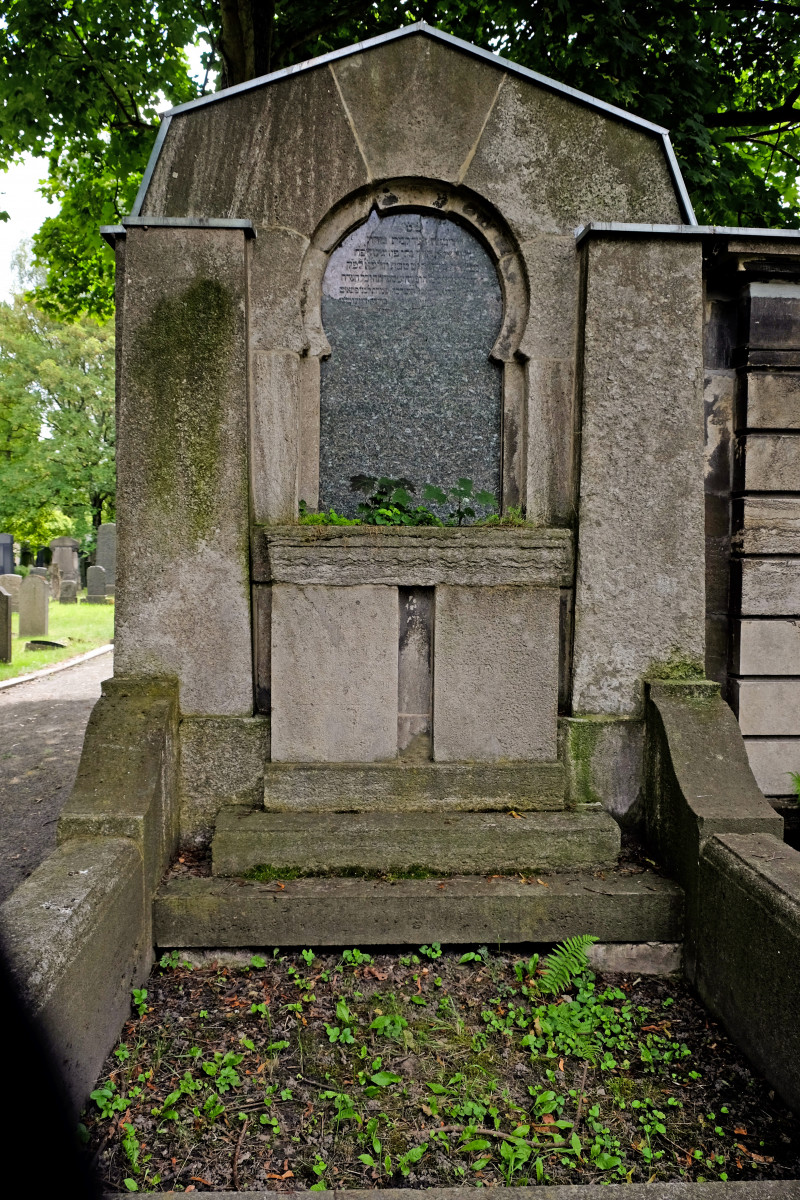
Porges, Rosalie (Porges)
Porges
Rosalie
geb. Friedmann
Sep 10, 1854
–
Jan 19, 1911
–
–
2
02
–
–
–
–
–
–
–
Zuweisung nach Übersetzung von Dr. T. Arndt, UNI Leipzig
Yes
Yes
niche grave
Position of the Headstone
IV
left
–
–
–
–
Porges
1
1
01a

Vorn
hebrew
gut, Text sehr schwer lesbar
Hier ist verborgen die Rabbinersfrau, die Gerechte, Frau Resl, Frau des Meisters/Herrn hiesigen Meisters // Rabbiner Nat(h)an Porges,
verschieden am fünften Wochentage, d. 19. Tevet 671 Kleiner Zählung. // Und über sie trauern ihr Mann und ihre Kinder/Söhne und ihre Familie und die ganze Gemeinde: Wie wurde die Krone unseres Hauptes in den Staub geworfen, wurde die Freude unseres Herzens plötzlich
in Trauer verwandelt. Jetzt wurde weggenommen, die von Frauen im Zelt Gesegnete! // Wir wurden all denen gleich, die das Tränental durchziehen. Auf Pfaden von Frieden und Wahrheit schritt sie stets, // prachtvoll mit teurer Seele und bescheidenem Geiste. Lehre von Anmut und Güte war in ihrem Munde bereit, die Hand des Armen und Dürftigen stärkte sie, auf Lebende und Tote miteinander erstreckte sich ihre Güte. // Waisen wurden wir, da sie in ihre Welt heimging. Doch die Frucht ihrer Taten hinterließ sie zum Segen. Und in Versammlung und Gemeinde wird ihr Lob fortdauern. // Ihre Seele sei eingebunden in das Bündel des Lebens.